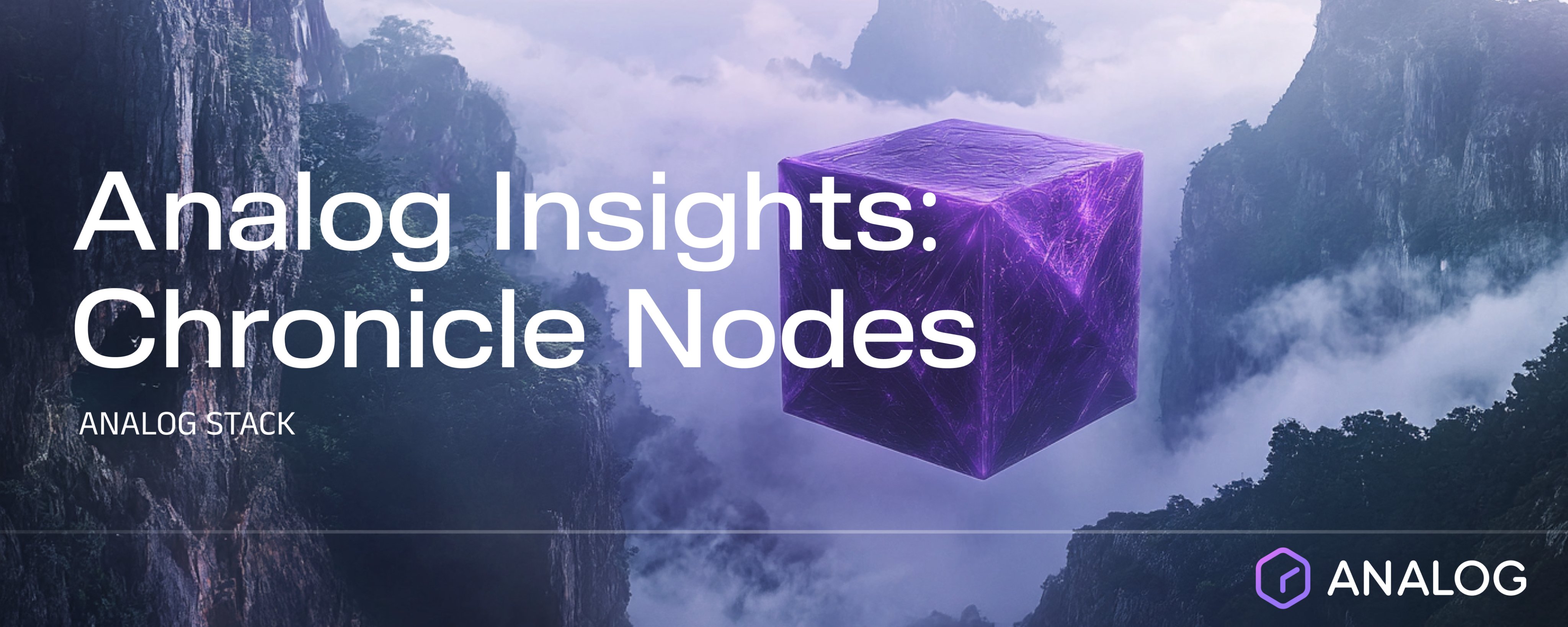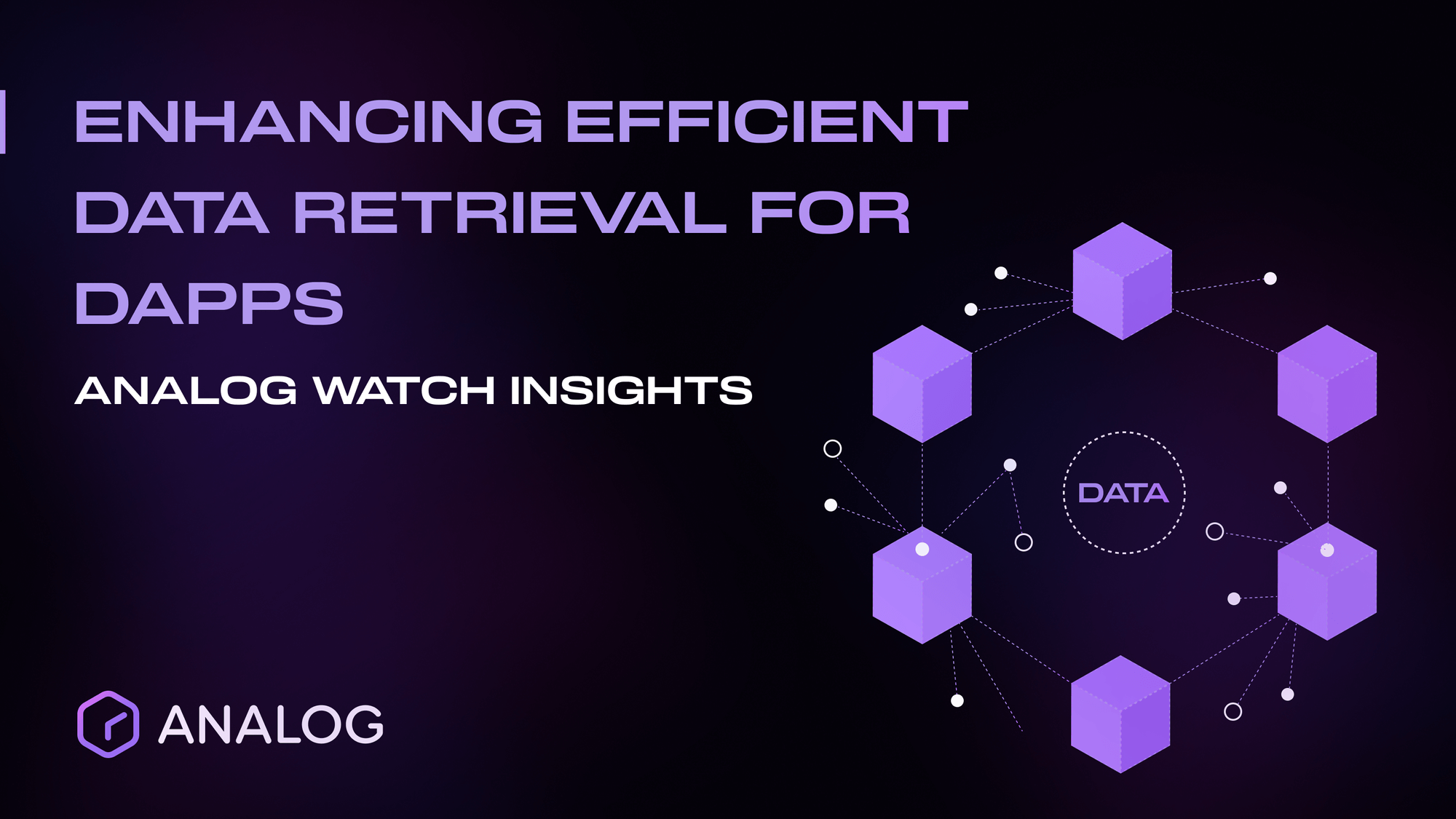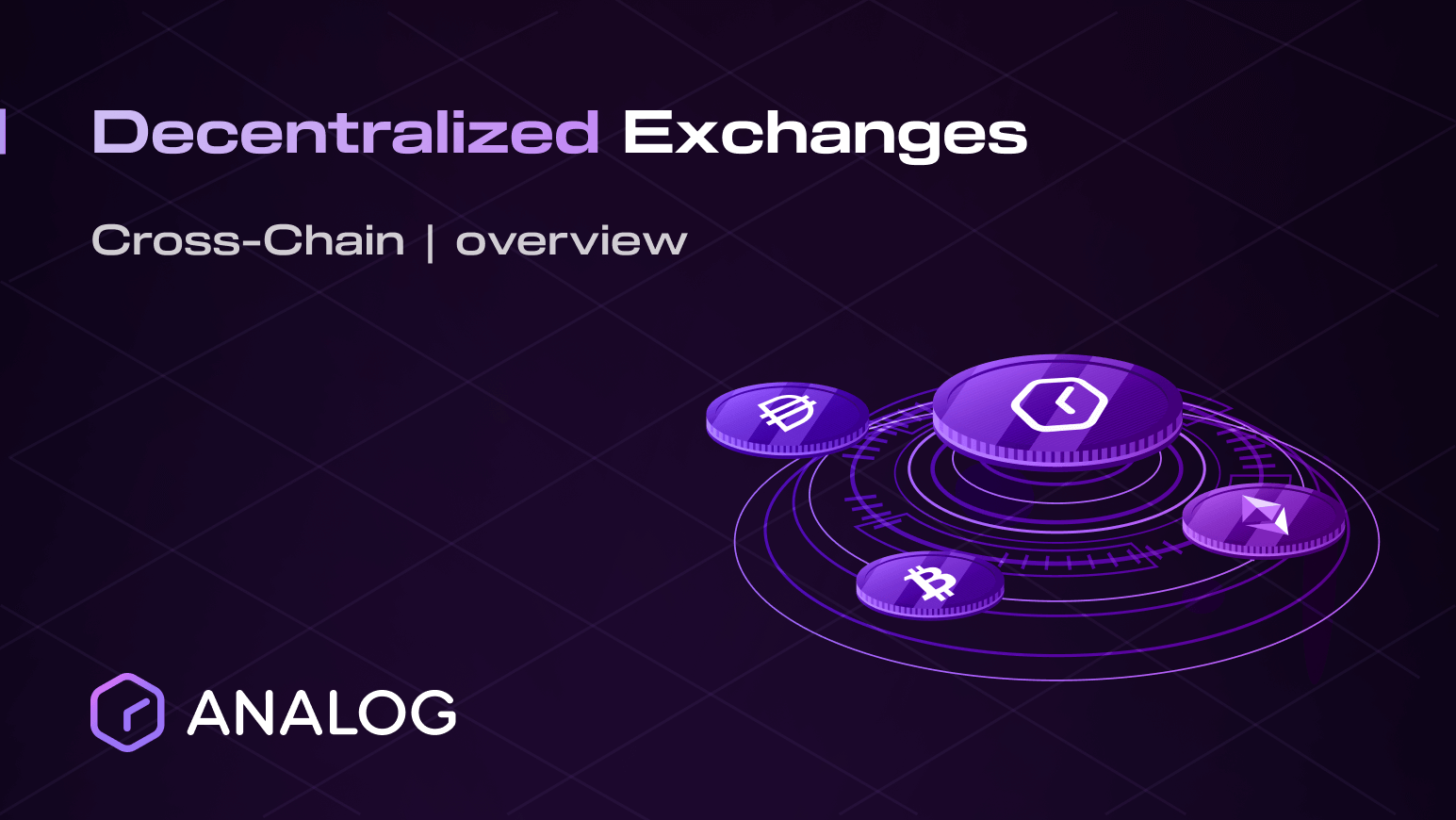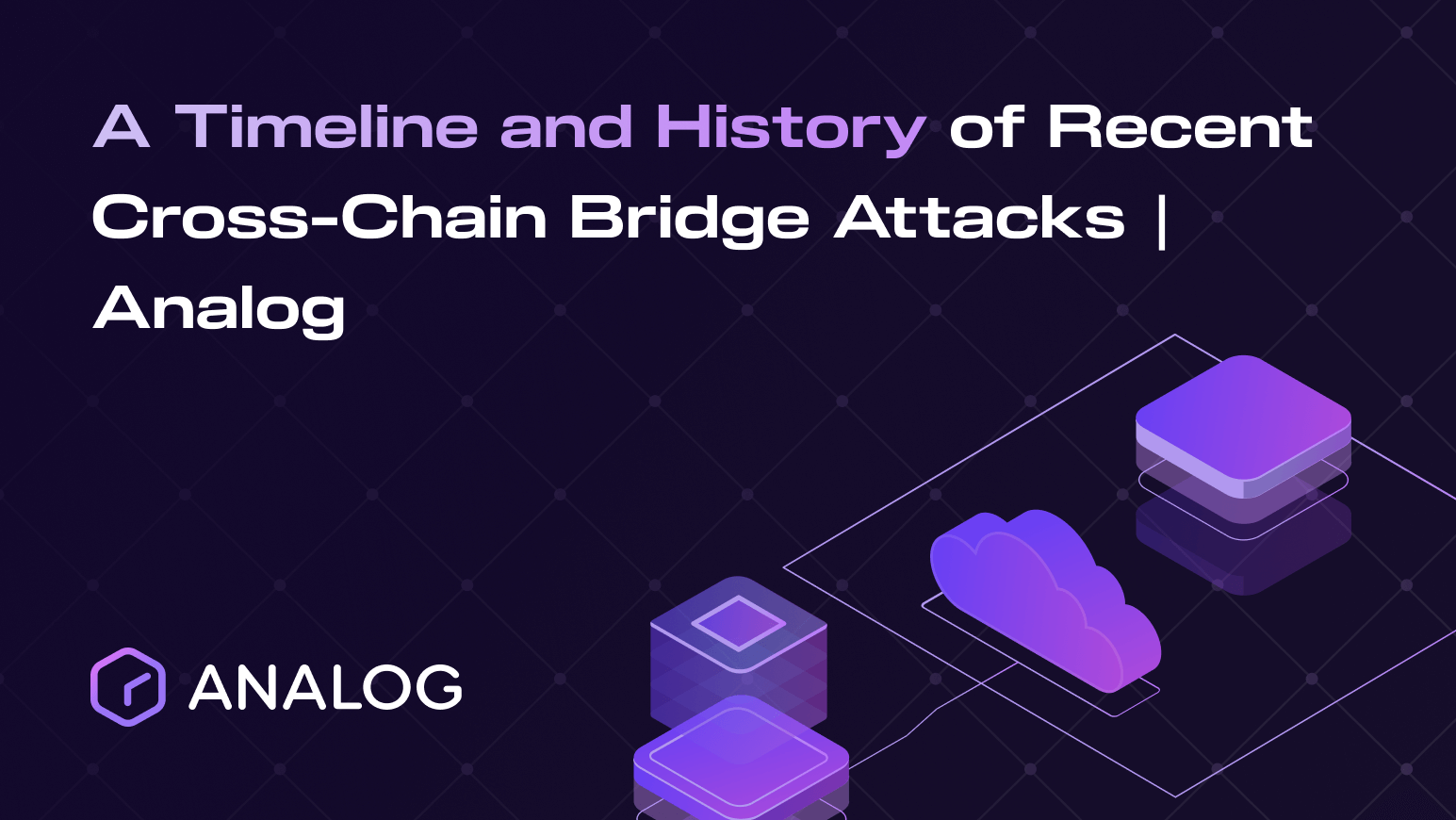
In the fragmented world of blockchain, moving assets or messages across chains typically involves a compromise.
Most protocols rely on oracles, bridges, or relayers to facilitate this process but each comes with trade offs in trust, security, and architectural coherence.
Analog’s Approach: Chronicle Nodes
At the heart of our cross-chain protocol lies a decentralized validation layer built around Chronicle Nodes which are specialized infrastructure that monitors, verifies, and relays data across 60+ connected chains.
But these aren’t just passive observers. They play an active role in achieving consensus over cross chain state.
How Chronicle Nodes Work
Every cross chain request, whether it's a token transfer, a governance message, or a smart contract call is first detected by Chronicle Nodes through continuous monitoring of external blockchains.
These nodes then validate the request using Threshold Signature Schemes (TSS), a cryptographic process that requires a 2/3 supermajority of nodes to agree before the request is considered valid.
This eliminates single points of failure and ensures no single node can act unilaterally.
Comparing the Alternatives
This stands in sharp contrast to the more common alternatives:
Oracles typically push external data onto blockchains, but they do so without requiring network-wide consensus. Their data is often taken as is, making them vulnerable to manipulation or downtime.
Bridges use lock and mint mechanics, where assets are held in custody and mirrored on another chain. This introduces asset risk—if the bridge is compromised, the wrapped assets become worthless.
Relayers broadcast messages across chains but can do so with minimal or no validation logic. In many cases, a single bad actor can hijack the process.
Why Chronicle Nodes Are Different
Chronicle Nodes sidestep these issues by being purpose-built for coordinated, decentralized cross-chain validation. They form the core of Analog’s Timechain, creating an immutable audit trail of verified events and maintaining temporal consistency across chains.
This isn’t just technical nuance it’s foundational. It’s what allows Analog to deliver trustless interoperability with real time execution, deterministic finality, and institutional-grade security.
What This Enables
As more applications require omnichain presence, from DeFi to real-world assets to autonomous AI agents, Chronicle Nodes ensure every interaction across chains is provable, permissionless, and secure by design.
That’s how Analog turns cross-chain messaging from a liability into infrastructure.
Final Thoughts: Building for a Connected Future
The blockchain ecosystem is evolving beyond siloed networks. What it needs now is coordination at scale. where assets, messages, and applications can move freely without compromise.
Chronicle Nodes are more than a validation mechanism; they’re a cornerstone of this vision. They enable a new standard for interoperability. one rooted in consensus, security, and real utility.
At Analog, we’re not just connecting chains. We’re unifying them into a single, programmable liquidity layer, one where every message counts, and every action is secure by default.
This is what it means to build the infrastructure for an omnichain world. And Chronicle Nodes are how we make that future real.










